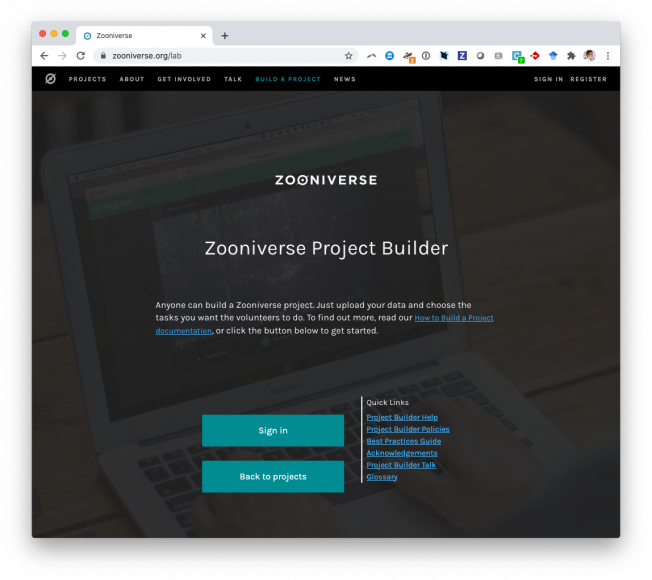Galaxy Zoo Green Peas: Discovery of A Class of Compact Extremely Star-Forming Galaxies
ArXiv 0907.4155 (2009)
Abstract:
We investigate a class of rapidly growing emission line galaxies, known as "Green Peas", first noted by volunteers in the Galaxy Zoo project because of their peculiar bright green colour and small size, unresolved in SDSS imaging. Their appearance is due to very strong optical emission lines, namely [O III] 5007 A, with an unusually large equivalent width of up to ~1000 A. We discuss a well-defined sample of 251 colour-selected objects, most of which are strongly star forming, although there are some AGN interlopers including 8 newly discovered narrow Line Seyfert 1 galaxies. The star-forming Peas are low mass galaxies (M~10^8.5 - 10^10 M_sun) with high star formation rates (~10 M_sun/yr), low metallicities (log[O/H] + 12 ~ 8.7) and low reddening (E(B-V) < 0.25) and they reside in low density environments. They have some of the highest specific star formation rates (up to ~10^{-8} yr^{-1}) seen in the local Universe, yielding doubling times for their stellar mass of hundreds of Myrs. The few star-forming Peas with HST imaging appear to have several clumps of bright star-forming regions and low surface density features that may indicate recent or ongoing mergers. The Peas are similar in size, mass, luminosity and metallicity to Luminous Blue Compact Galaxies. They are also similar to high redshift UV-luminous galaxies, e.g., Lyman-break galaxies and Lyman-alpha emitters, and therefore provide a local laboratory with which to study the extreme star formation processes that occur in high-redshift galaxies. Studying starbursting galaxies as a function of redshift is essential to understanding the build up of stellar mass in the Universe.Galaxy Zoo: A correlation between coherence of galaxy spin chirality and star formation efficiency
ArXiv 0906.0994 (2009)
Abstract:
We report on the finding of a correlation between galaxies' past star formation activity and the degree to which neighbouring galaxies rotation axes are aligned. This is obtained by cross-correlating star formation histories, derived with MOPED, and spin direction (chirality), as determined by the Galaxy Zoo project, for a sample of SDSS galaxies. Our findings suggest that spiral galaxies which formed the majority of their stars early (z > 2) tend to display coherent rotation over scales of ~10 Mpc/h. The correlation is weaker for galaxies with significant recent star formation. We find evidence for this alignment at more than the 5-sigma level, but no correlation with other galaxy stellar properties. This finding can be explained within the context of hierarchical tidal-torque theory if the SDSS galaxies harboring the majority of the old stellar population where formed in the past, in the same filament and at about the same time. Galaxies with significant recent star formation instead are in the field, thus influenced by the general tidal field that will align them in random directions or had a recent merger which would promote star formation, but deviate the spin direction.Revealing Hanny's Voorwerp: radio observations of IC 2497
ArXiv 0905.1851 (2009)
Abstract:
We present multi-wavelength radio observations in the direction of the spiral galaxy IC 2497 and the neighbouring emission nebula known as "Hanny's Voorwerp". Our WSRT continuum observations at 1.4 GHz and 4.9 GHz, reveal the presence of extended emission at the position of the nebulosity, although the bulk of the emission remains unresolved at the centre of the galaxy. e-VLBI 1.65 GHz observations show that on the milliarcsecond-scale a faint central compact source is present in IC 2497 with a brightness temperature in excess of 4E5 K. With the WSRT, we detect a large reservoir of neutral hydrogen in the proximity of IC 2497. One cloud complex with a total mass of 5.6E9 Msol to the South of IC 2497, encompasses Hanny's Voorwerp. Another cloud complex is located at the position of a small galaxy group ~100 kpc to the West of IC 2497 with a mass of 2.9E9 Msol. Our data hint at a physical connection between both complexes. We also detect HI in absorption against the central continuum source of IC 2497. Our observations strongly support the hypothesis that Hanny's Voorwerp is being ionised by an AGN in the centre of IC 2497. In this scenario, a plasma jet associated with the AGN, clears a path through the ISM/IGM in the direction towards the nebulosity. The large-scale radio continuum emission possibly originates from the interaction between this jet and the large cloud complex that Hanny's Voorwerp is embedded in. The HI kinematics do not fit regular rotation, thus the cloud complex around IC 2497 is probably of tidal origin. From the HI absorption against the central source, we derive a lower limit of 2.8E21 +- 0.4E21 atoms/sqcm to the HI column density. However, assuming non-standard conditions for the detected gas, we cannot exclude the possibility that the AGN in the centre of IC 2497 is Compton-thick.Galaxy Zoo: The properties of merging galaxies in the nearby Universe - local environments, colours, masses, star-formation rates and AGN activity
ArXiv 0903.5057 (2009)
Abstract:
Following the study of Darg et al. (2009; hereafter D09a) we explore the environments, optical colours, stellar masses, star formation and AGN activity in a sample of 3003 pairs of merging galaxies drawn from the SDSS using visual classifications from the Galaxy Zoo project. While D09a found that the spiral-to-elliptical ratio in (major) mergers appeared higher than that of the global galaxy population, no significant differences are found between the environmental distributions of mergers and a randomly selected control sample. This makes the high occurrence of spirals in mergers unlikely to be an environmental effect and must, therefore, arise from differing time-scales of detectability for spirals and ellipticals. We find that merging galaxies have a wider spread in colour than the global galaxy population, with a significant blue tail resulting from intense star formation in spiral mergers. Galaxies classed as star-forming using their emission-line properties have average star-formation rates approximately doubled by the merger process though star formation is negligibly enhanced in merging elliptical galaxies. We conclude that the internal properties of galaxies significantly affect the time-scales over which merging systems can be detected (as suggested by recent theoretical studies) which leads to spirals being `over-observed' in mergers. We also suggest that the transition mass $3\times10^{10}{M}_{\astrosun}$, noted by \citet{kauffmann1}, below which ellipticals are rare could be linked to disc survival/destruction in mergers.Galaxy Zoo: the fraction of merging galaxies in the SDSS and their morphologies
ArXiv 0903.4937 (2009)



